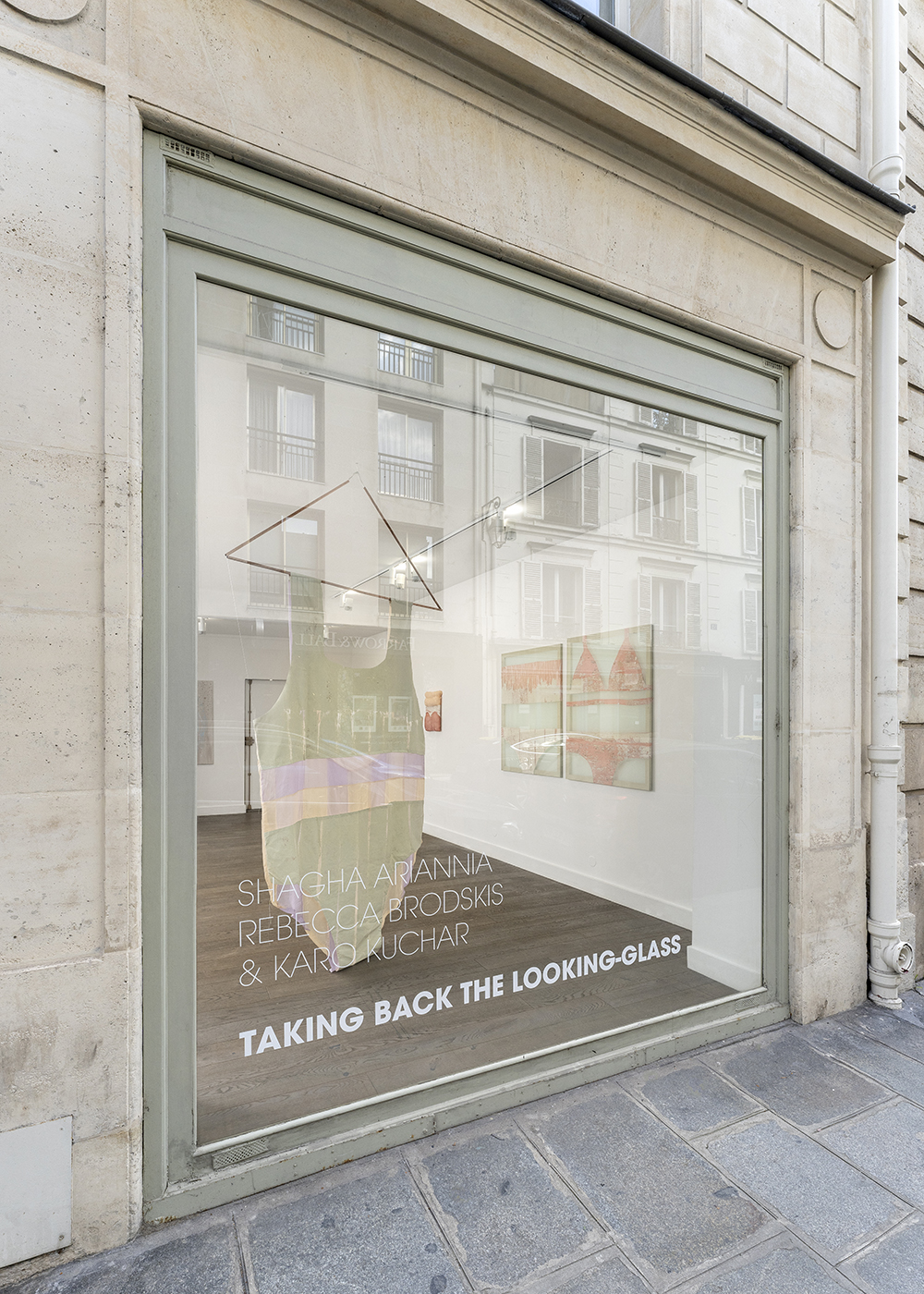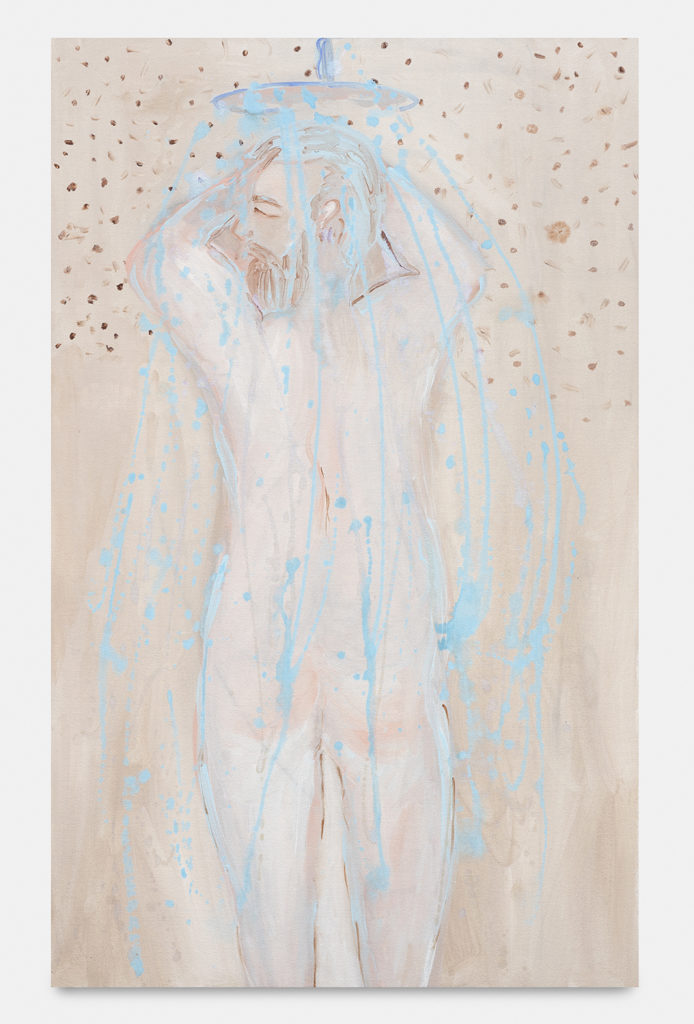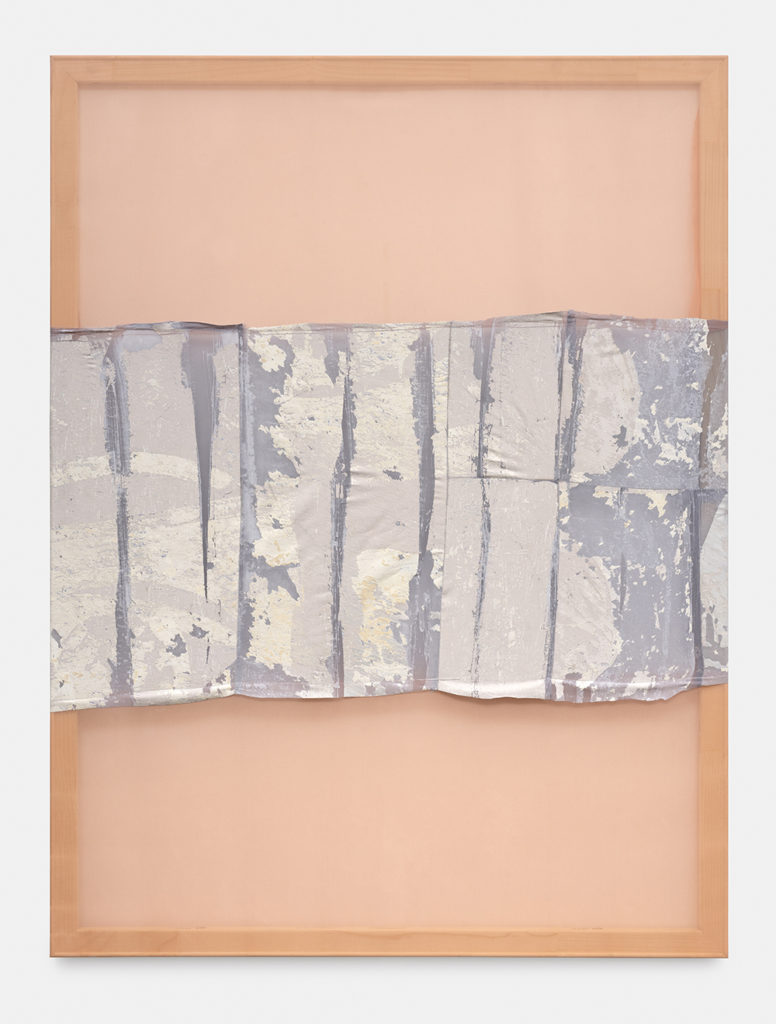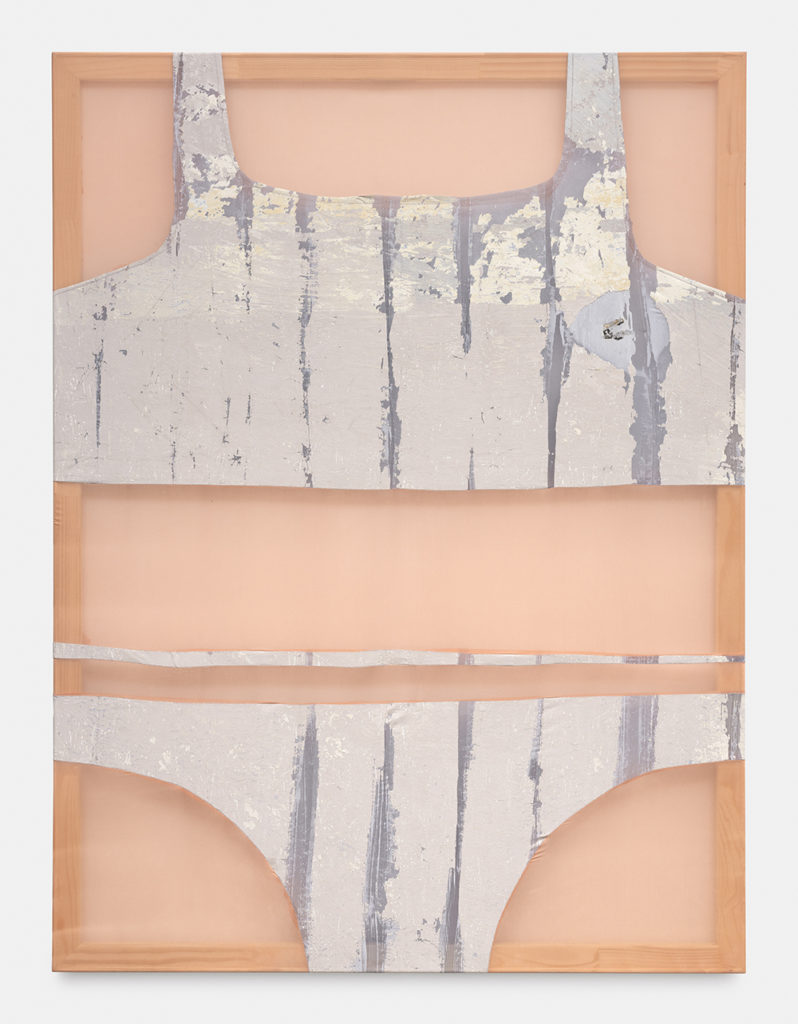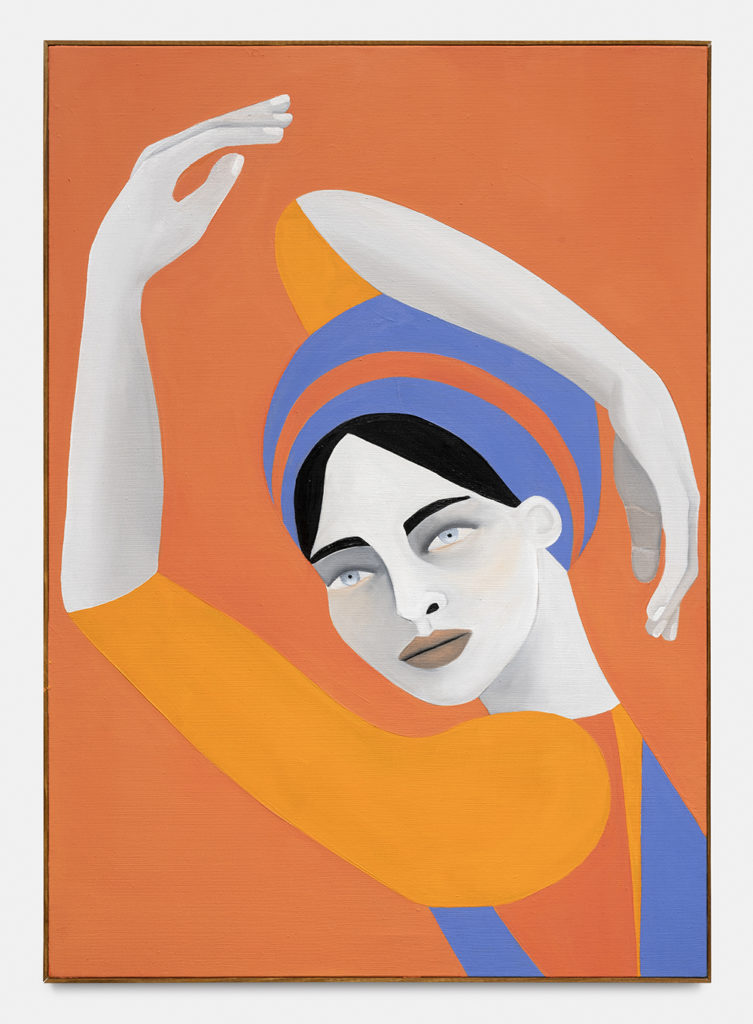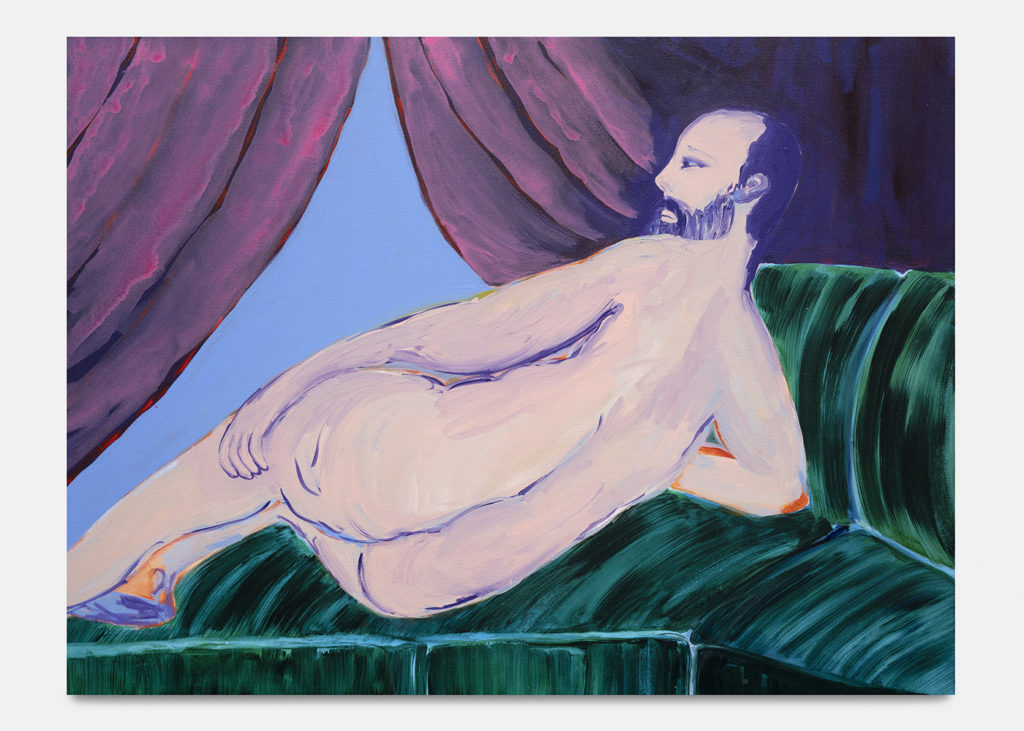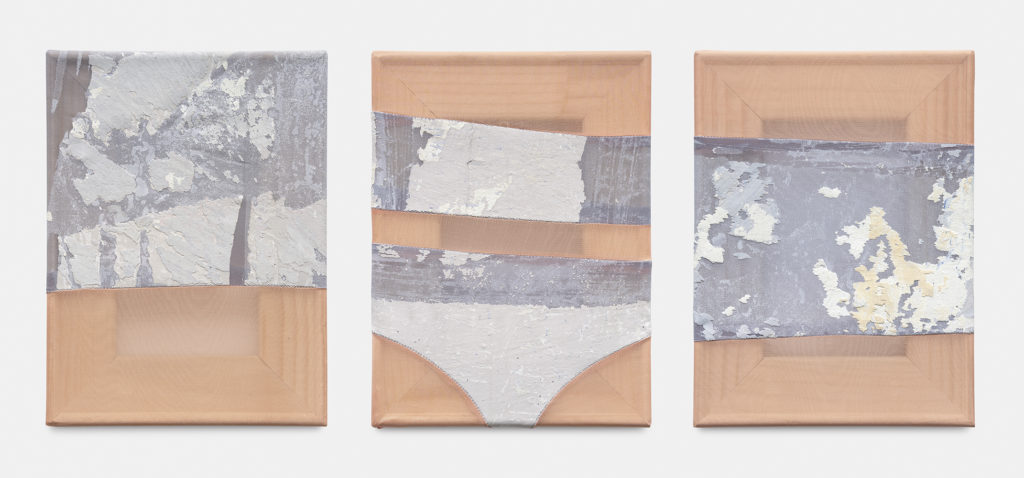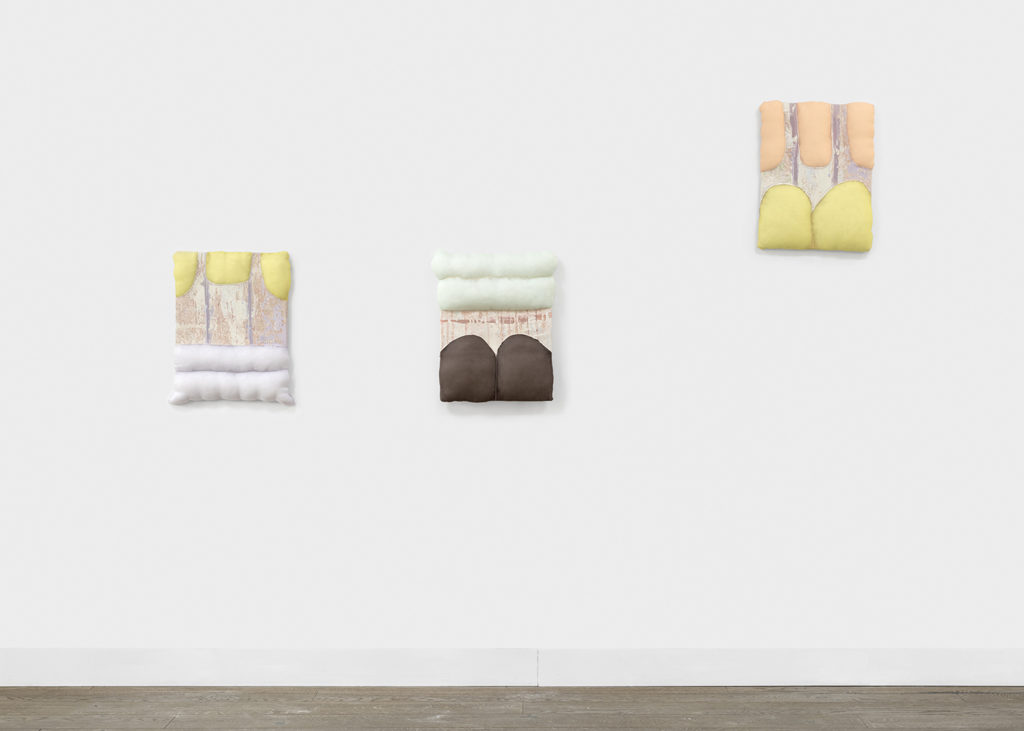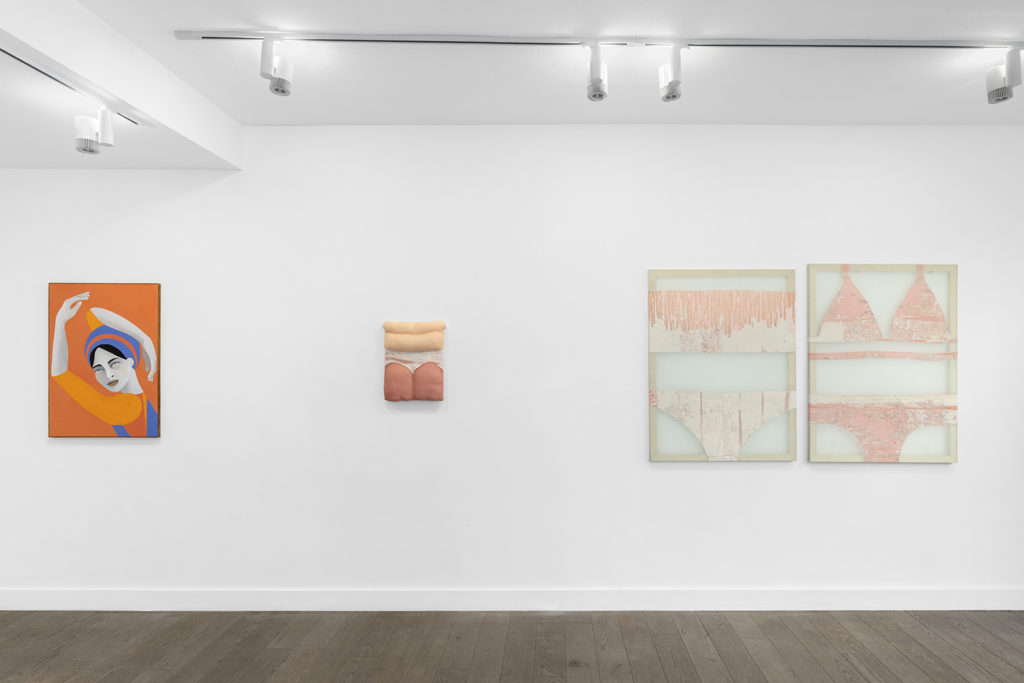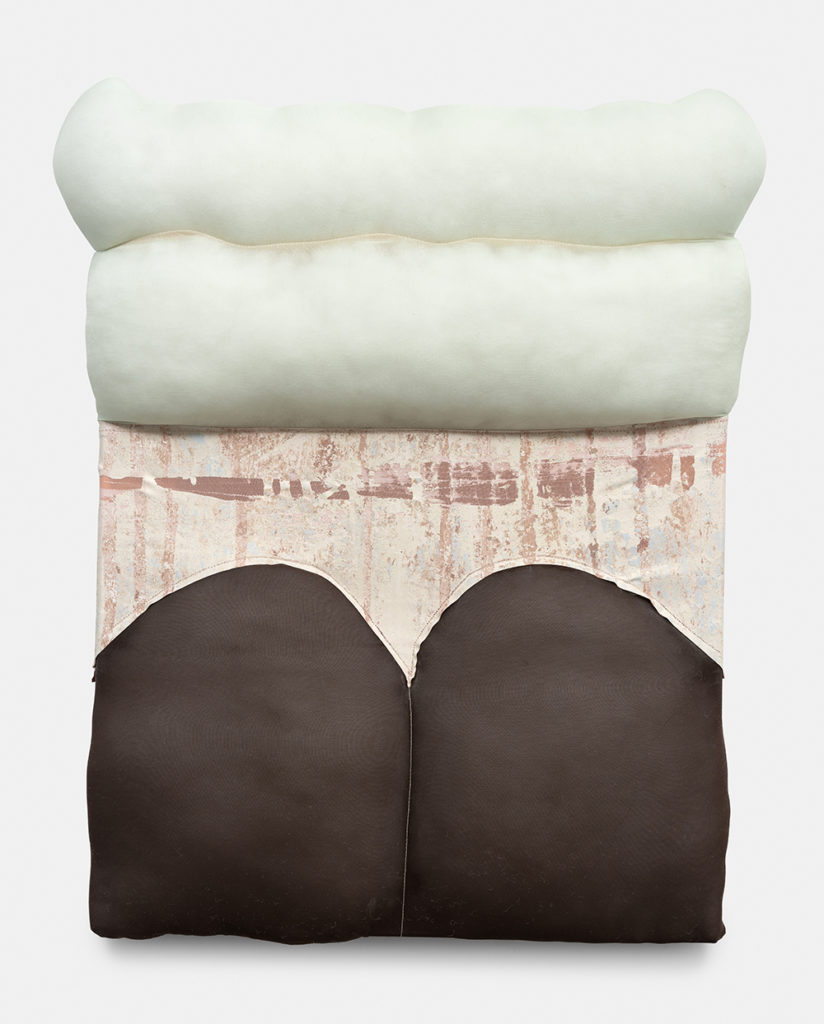What if it were possible to take back the mirror that society holds up to us, to recover the image that defines us, to distort it, to paint the turns and contours that correspond to us, to draw new patterns and sculpt lines that fit our own?
For Charles Cooley, an American anthropologist in the early twentieth century, this possibility would only be a fantasy. According to his theory of the “Looking-Glass self ”, the individual defines himself based on the perception of those around him. The mirror, enabled by social interaction, held up by society, is the founding element of the individual, whose full existence is only possible with the collective. This process, Cooley believed, allows the coherence of society, the alignment of the individual with the other, ensuring the balance of life.
Taking Back the Looking-Glass proposes to dive into the heart of the fantasy, and to confront the collective with it. Each in their own way, Shagha Ariannia, Rebecca Brodskis and Karo Kuchar have succeeded in recovering and turning back the mirror. They unbalance, twist or divert the alignment of things to impose the authority of their personal prisms on the collective, desiring to be able to define themselves freely through their gestures.
A visual artist of Iranian origin, Shagha Ariannia, through her paintings of naked men transformed into odalisques of the 19th century, reverses the roles that society has since shaped and cemented. She proposes a new version of the world, where the white man is objectified and exoticized and where women can reclaim their rights.
Rebecca Brodskis explores this precious moment when interaction contracts, she captures this in-between moment, reconfigures it and disarticulates it. In her paintings with decontextualized bodies, individuals are freed from distinctive signs, detached from their gender and origin identity. The limits are blurred to reach the essence of the individual. Disengaged from the gaze of the other, the individual is revealed.
Karo Kuchar prints the memory of spaces on silk and organza. In this way, she creates swimsuits and underwear, a second skin or the last layer before intimacy, and reveals curves and shapes in their immateriality. She shows what is hidden and unveils women’s bodies without stripping them, erasing the bodies to make them otherwise visible.
